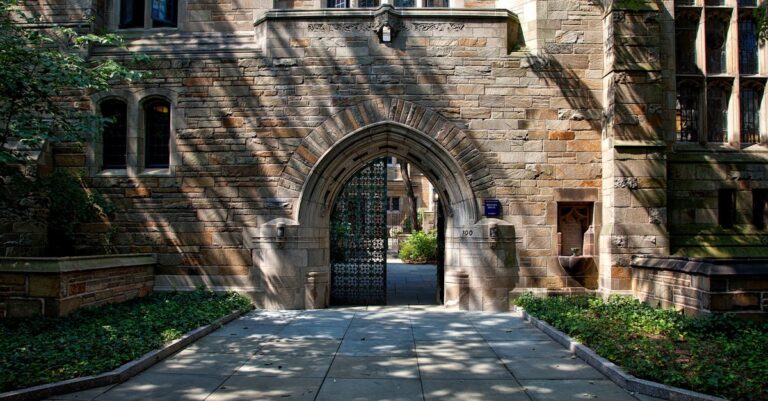
In recent years, the occurrence of wildfires has captured global attention due to their devastating impact on the environment, property, and communities. While many factors contribute to the outbreak of these natural disasters, a lesser-known but significant aspect is the role of arsonists – individuals who intentionally set fires with destructive intentions. This bizarre connection between wildfires and criminal behavior sheds light on a dark reality that law enforcement agencies worldwide are grappling with.
From the arid landscapes of California to the vast forests of Australia, instances of wildfires have inflicted untold damage, often exacerbated by the deliberate actions of arsonists. In the context of international incidents, the issue of wildfire arson transcends geographical boundaries, with cases reported in countries such as Greece, Portugal, and Indonesia. The motives behind these acts of arson vary, ranging from personal vendettas to environmental terrorism, highlighting the complex nature of the crime.
Closer to home, in America, the prevalence of wildfire arson has become a pressing concern for law enforcement agencies. The vast expanse of forested areas in states like California, Oregon, and Colorado provides ample opportunities for arsonists to wreak havoc. The financial burden of combating wildfires caused by arson runs into billions of dollars annually, further underscoring the need for robust prevention and detection measures.
The involvement of police in investigating incidents of wildfire arson is crucial in unraveling the mysteries behind these destructive acts. The painstaking process of collecting evidence, analyzing fire patterns, and interviewing witnesses requires a high level of expertise and collaboration between various law enforcement agencies. The use of forensic techniques, including DNA analysis and fire debris examination, plays a pivotal role in identifying the culprits responsible for igniting wildfires.
Despite the challenges posed by wildfire arson, law enforcement agencies have made significant strides in apprehending perpetrators and bringing them to justice. Through community engagement initiatives, public awareness campaigns, and enhanced surveillance methods, the fight against arson-related wildfires continues to evolve. By fostering a culture of vigilance and accountability, police departments aim to deter potential arsonists and prevent future incidents from occurring.
In conclusion, the intertwining of wildfires with the criminal act of arson sheds light on a disturbing aspect of human behavior that has far-reaching consequences. The international, American, and crime-related dimensions of wildfire arson underscore the need for concerted efforts by law enforcement agencies to combat this growing menace effectively. By understanding the motivations behind these acts and employing proactive strategies, we can strive towards a future where wildfires are no longer fueled by criminal intent.
As the global community grapples with the challenges posed by wildfires, it is imperative to recognize the role of arsonists in perpetuating this destructive cycle. By addressing the root causes of wildfire arson and holding perpetrators accountable, we can work towards a safer and more resilient environment for future generations.









Wow, who knew that people actually go around starting wildfires on purpose? Like, seriously, who has the time and energy to do that? Maybe instead of setting fires, these arson
It’s so sad to think about how some people would intentionally start fires just to cause destruction. The damage these wildfires cause is unbelievable, and it’s even worse knowing that some of them could have been prevented if it weren’t for these arsonists. It’s a dark reality that we have to acknowledge and address, but it’s heartening to see law enforcement agencies working hard to catch these criminals. We all need to do our part in preventing such senseless acts and protecting our environment.
Wow, who would’ve thought that people setting fires on purpose could cause wildfires? I mean, it’s not like fire magically appears out of thin air, right? And of course
Yikes! Wildfires are bad news bears, but arsonists making them on purpose? That’s just plain silly. Who has time for that kind of mischief? Let’s stick to roasting marshmallows over a campfire, folks! 🔥
Hey y’all, can we talk about how crazy it is that some people out there purposely start wildfires? Like, what’s going on in their heads, right? The cops sure have their work cut out for them trying to catch these arsonists. And can you believe how much money it costs to deal with these fires they
omg this is so annoyin like who would purposly start fires just to be mean or whatevr????? its so cray cray ugh like cant they find a hobby or sumthin??? smh the world is so weird
Wow this is fascinating! I never knew about the link between wildfires and arsonists. It’s crazy to think
Ya know these wildfires are so sad, they cause so much damage and stuff. But did you know some of them are started by bad people on purpose? Yeah,
wild fires r so bad, they wreck everythin. i mean there’s people who wants to burn things on purpuse?? that’s not cool. we need to find those people and stop them from doin
Hey y’all, it’s so wild to think about how some people would intentionally start wildfires! Like why would they do that? It’s like playing with fire, literally haha. But shoutout to all the police officers out there working hard to catch these arsonists and keep us safe. Let’s all do our part in preventing wildfires and protecting our environment. Stay safe, everyone! 🌲🔥🚔
Law enforment has a tough job catchin them arsonists who start wildfires. It’s like a real-life game of cat and mouse, ‘cept the mouse is settin’ stuff on fire! But hey, shoutout to all the cops and investigators workin’ hard to keep our forests safe. Let’s hope these arsonists get caught before they can cause any more trouble. Stay safe out there, folks!
Arsonists are the worst! Like, seriously, who goes around setting fires on purpose? It’s just so messed up and it
Whew, wildfires been causing a lot of trouble lately, right? I mean, it’s sad to see the environment and
The issue of wildfire arson is indeed a troubling one, as highlighted by the
Arsonists are the worst! They’re like villains in real life setting fires and causing so much destruction. Why would anyone do that? It’s so messed up! These firefighters and law enforcement peeps have a tough job dealing with all this craziness. Props to them for catching those arsonists and stopping them from causing more trouble.
Wildfire arson is a big issue we need to talk about. It’s not just about the fire, it’s also about the criminal what’s behind making it bigger and more dangerous, like a spy
Wow, wildfires are so cray-cray, right? Like, they’re so bad for the environment and stuff. But did you know that sometimes people actually start these fires on purpose? I mean, who would do such a thing?! It’s like a real-life mystery movie, with cops investigating and using super cool forensic techniques to catch the bad guys
OMG y’all, can you believe arsonists out there are setting fires on purpose? Like, who has time for that kind of mischief? We should all just have a bonfire and roast marshmallows instead of causing chaos. Stay safe out there, friends, and remember
Wildfires are so sad and bad for the places they burn and the people who live there. Some wildfires are started on purpose by bad people called arsonists. It’s like they don’t care about anything but causing
Wow, these arsonists really be out there causing chaos with their fire-starting ways! Like, who has the time and energy to intentionally set things on fire? It’s wild how much
Wildfires are real bad, they hurt the environment and lots of stuff. I think dealing with arson is important
Wildfires have been a major issue lately, we all know that. But did you know that some of these fires are actually started on purpose by people? Yeah, there are folks out there who intentionally set fires just to cause destruction. It’s crazy, right?
These arsonists are causing
Wildfires are a big problem all over, yeah. The article mentions how some of these fires are started on purpose by people! It’s like, why would anyone want to do that, right? The cops have to work really hard to figure out who’s starting them fires. They use DNA stuff and
yeah i think arson is a real big problem with wildfires and it’s crazy how people would intentionally start fires like that it’s like why would they do
ughhh i can’t believe ppl would just go setting fires on purpose like that?? like don’t they know the harm they’re causing to the
Woah, wildfires are such a big deal y’all! It’s like, so sad how much damage they cause to the environment and homes and stuff. But like, did you know that some fires are actually set on purpose by bad people? Yeah, they’re called arsonists and they’re like the villains of the wildfire world. And it’s not just in one place, it’s
Wow, wildfires are so scary and bad for the environment and stuff. It’s like, why would someone wanna purposely start a fire, you know? Like, that’s so not
Heyyy, this is such an important topic to talk about! Wildfires are like super scary
Wildfire arson is serious global problem. Criminals who start fires are causing major destruction to the environment and communities. Police need to work
It’s so sad to think about how wildfires can be intentional, like someone setting them on purpose. Why would anyone want to destroy
arsonists r the worst! srsly who w
Woah, wildfires are serious business man. It’s like, you got Mother
wow! wildfires are super bad and it’s like so crazy
Arsonists setting fires on purpose is just so wrong, like why would anyone want to do that and harm the environment and people’s homes? It’s like they don’t even care about the consequences of their actions. But hey, it’s good that the police are working hard to catch these fire starters and make them pay for what they’ve done. I hope
Heyyy, so I was just reading about these wildfires and it’s so sad all the damage they cause! Did you know some of them
Hey y’all, this here blog post got me thinkin’ ’bout them wildfires and them arsonists
Wowza, talk about a hot topic! 🔥 It’s like these arsonists are playing with fire in the worst possible way. But hey, props to the police for sleuthing out those fire-starters and bringing them to justice.
OMG!!! I can’t even believe some people go around starting fires on purpose, like who does that?? It’s sooo not cool and like, totally dangerous! The police gotta do something about it, like catch those bad guys
lol, so you’re telling me there are actual people out there setting fires on purpose? Like, who has time for that kind of crazy behavior? They should just stick to roasting marshmallows instead of whole forests, am I right? On a serious note though, it’s kinda scary how much damage these wildfires can cause, and it’s good to know that the police are on it, playing detective
lol so like are the arsonists trying to roast marshmallows or something?? 🔥🍡🔥Seriously though, it’s wild how some people are out there starting fires on purpose. Stay safe out there, folks, and let’s hope they catch those fire-starting troublemakers soon
wildfire is so sad. my friend lost her home in a fire once. did you know some fires are started on purpose? it’s so awful to think about people doing that. i hope they catch those bad guys. the police work so hard to solve these crimes. bless them for their hard work. wildfires are scary but arson makes it even worse. we gotta protect our earth and stop
Wow, this is some heavy stuff to think about. Wildfires are already so destructive, but to know that some of them are actually caused by people intentionally setting fires is just mind-blowing. It’s like a whole new level of crime that affects not just property but whole communities and ecosystems. And the
Wild fires is such a big promblem, but not many peoples know that somtimes the fires arent an accident. People, like arsonists, they start the fires on purpose and thats very dangerous and bad
WOW. Fires are bad. I mean, like really bad. And then you got these arsonists making things worse? That’s
Wildfires are a big problem! Arsonists are really bad for setting fires on purpose. It’s a crime that costs a lot of money and hurts a lot of people. The police have to work